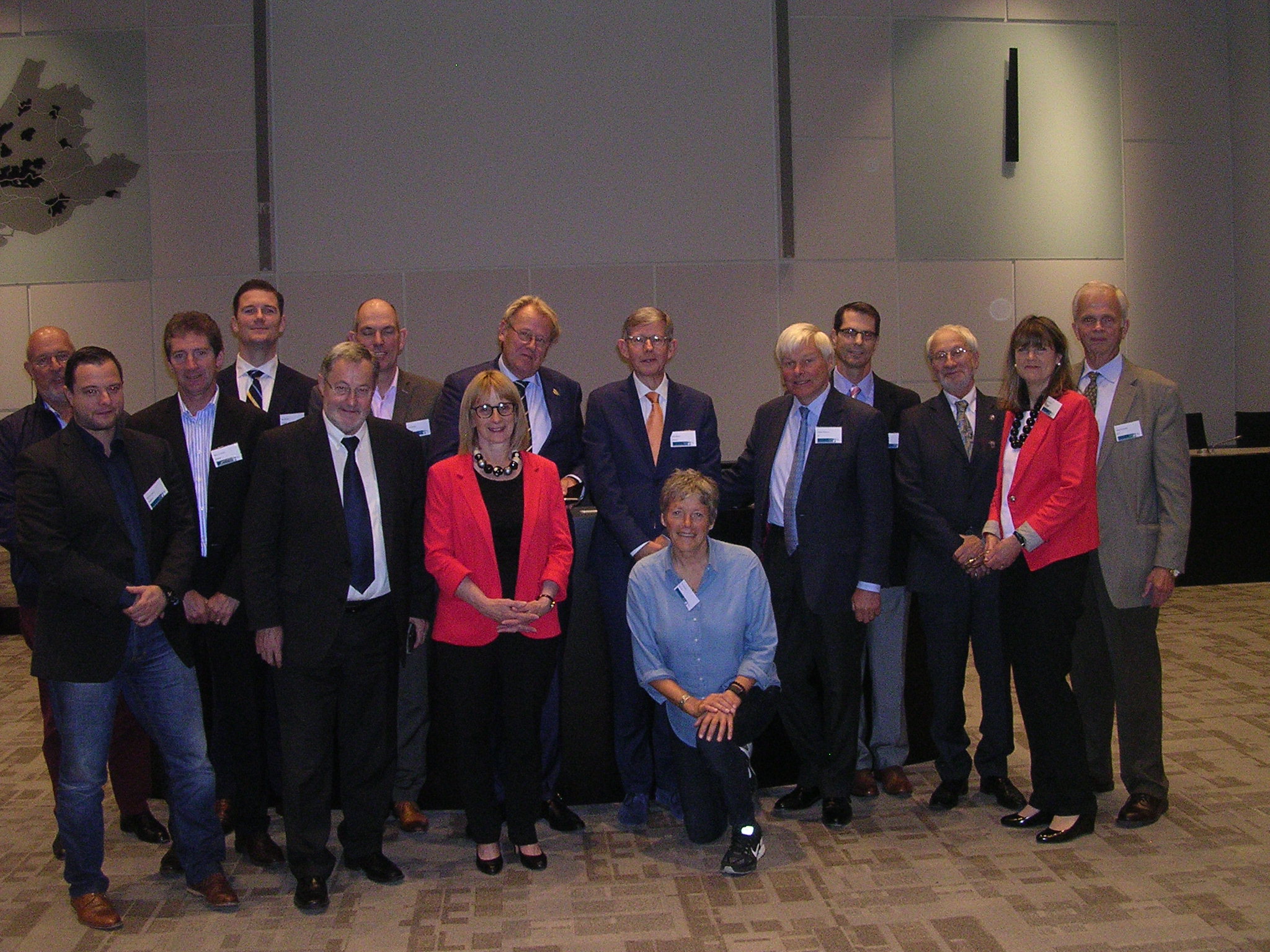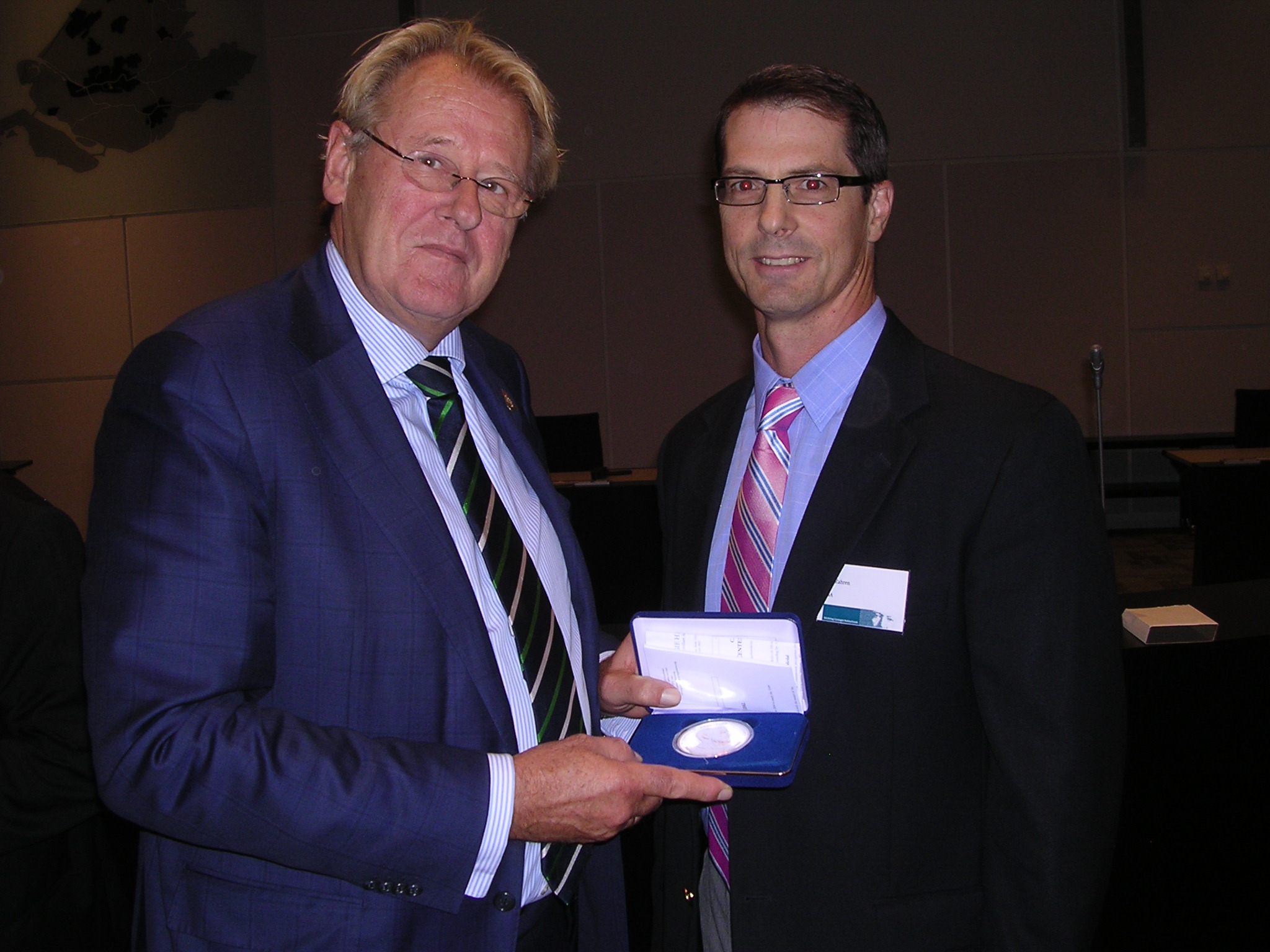

Representatives from six of the hero funds established by Andrew Carnegie more than a century ago met in The Hague, Netherlands, in early October 2016. Nine of the 11 original funds are still in existence, and they have formed an association, the Carnegie Hero Funds World Committee, to address matters of mutual concern and to share with each other how they go about their work. The committee strives to meet yearly and most recently has gathered in New York, Rome, and Edinburgh.
The latest gathering was hosted by Stichting Carnegie Heldenfonds, the Dutch hero fund, whose chair is Jaap Smit. Smit is also the King’s Commissioner, or governor, of South Holland, the largest of the country’s 12 provinces, and as such presides over the 55-member provincial parliament. It was in the parliament’s headquarters, Provinciehuis, that the Carnegie delegates gathered, and Smit, a theologian by training who also worked as a union leader, welcomed them with a charge: Join forces and celebrate the legacy of Andrew Carnegie.
That legacy includes being a society by building caring communities, Smit said, adding to a quote from former U.S. President Bill Clinton, “It’s not only the economy, stupid.” The Dutch hero fund of late has been undergoing a philosophical rebirth along those lines, he said, with its newly launched National Heroes Day held in The Hague. The first such observance, in 2015, had this message for the Dutch people: Look at these heroes and see how they acted as co-owners of our society. Similar events are planned for 2016 and 2017.
Applying the concept of a national “heroes day” on a greater scale intrigued the Carnegie delegates. Boi Jongejan, the Dutch fund’s vice chair, said the possibility of a world movement is in the making, as people need to be reminded that “when you’re a part of a society, you look around to help.”
The meeting was chaired by William Thomson of Scotland, one of the great-grandchildren of Andrew and Louise Carnegie. He told the delegates that altruism drives a civil society and that the hero funds are relevant, all while alluding to the financial difficulties that a few of the funds are facing. Those funds were directed to prepare proposals for assistance that the committee might be able to accommodate.
Other topics addressed were raising awareness of the funds’ activities in their respective countries and how to maintain strong lines of communication among the funds during the period between their meetings. The effectiveness of informal, off-year visits among the funds was noted by Nora Rundell, chief executive of the U.K.’s Carnegie Hero Fund Trust. She referenced visits by Thomson and U.S. fund representatives Linda Hills, Mark Laskow, and Walter Rutkowski, who met with the funds of Belgium, Norway, Denmark, and Switzerland in recent years. Eric Zahren, executive director of the U.S. fund, commented on the importance of taking advantage of social media applications, both privately among committee members and in public forums. New this year to his position, Zahren is broadening the U.S. fund’s social media exposure.
Engaging the U.S. ambassadors or their staffs in the funds’ activities was also addressed, and Zahren, a former U.S. government employee, volunteered his services by being a contact with the U.S. Department of State.
Funds represented at the meeting were those of Norway, the U.K., the U.S., Belgium, the Netherlands, and Italy, and the host city was certainly no stranger to Carnegie interests. Virtually in the shadow of Provinciehuis is the stately and magnificent Peace Palace, which was built with a $1.5 million gift in 1903 from Andrew Carnegie. Owned and maintained by the Carnegie Foundation of The Hague, the structure is home to the International Court of Justice, which is the highest judicial body of the United Nations. Carnegie attended the building’s inauguration ceremony in 1913.
The next meeting of the Carnegie Hero Funds World Committee will be held in New York City in the fall of 2017, in conjunction with the biennial awarding of the Carnegie Medal of Philanthropy by the Carnegie Corporation of New York.
Return to imPULSE index.
See PDF of this issue.

